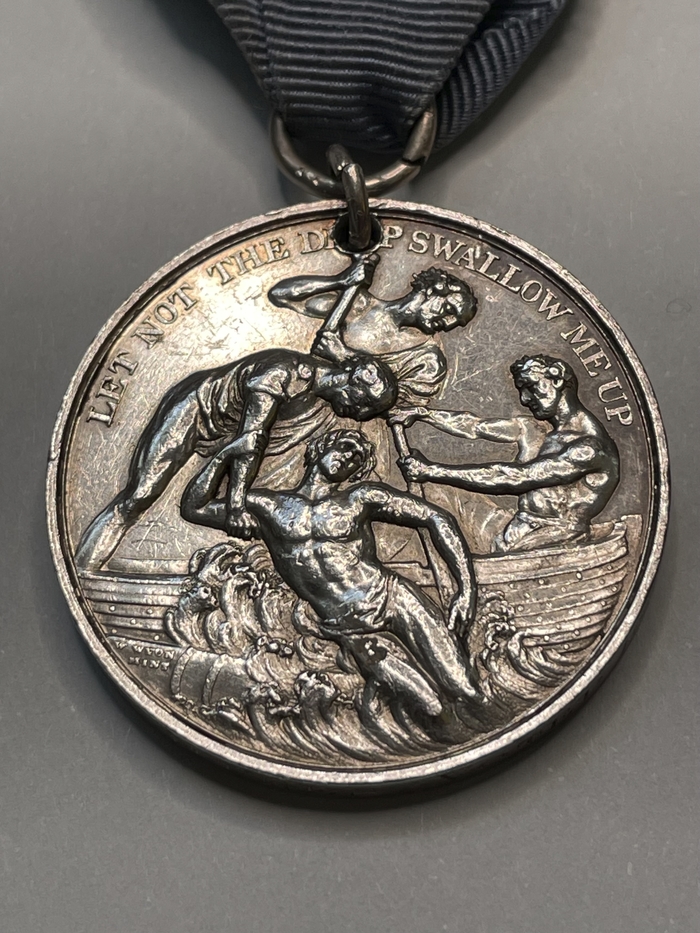During a recent visit to the Isle of Man, I was struck by a substantial monument in Douglas, commemorating a maritime rescue in 1830. Aware of another heroic rescue in Galway the same year, I realised both took place during the same storm.
The efforts of Claddagh fishermen, and their captain Bartley Hynes, are forgotten, while those of Sir William Hillary and his volunteer crew are celebrated in institutional histories of the RNLI. Coincidentally, rescuers in both instances were native speakers of the mutually intelligible Gaelic languages of Manx and Irish.
Destruction in Galway
Contemporary newspapers record that high winds from the south-west struck Ireland and Britain on November 19 and 20, 1830, causing widespread destruction.
The Limerick Chronicle described a ‘dreadful hurricane on the coast of Galway’, which caused fatalities in Connemara, Ardfry, and Clarinbridge. The bridge at Oranmore was swept away, and two women and a child were drowned in their beds. Elsewhere, ‘fishing boats at a place called Claddagh were totally destroyed, and hundreds of families of the poor fishermen fled naked from their homes to avoid destruction’.
Isle of Man rescue
It was equally fierce in Douglas, when the Royal Mail steam packet from Liverpool, the St George, dropped anchor. Early on November 20, the anchor cable snapped, and the vessel was dashed against the infamous Conister Rock.
Learning of the imminent tragedy, Sir William Hillary put to sea on the Douglas lifeboat, with a volunteer crew of sixteen, mostly fishermen. In 1824, Hillary had been instrumental in establishing the precursor to the RNLI, the National Institution for the Preservation of Lives and Property from Shipwreck, so he was committed to the cause.
Several of the lifeboat crew were washed overboard, including 59-year-old Hillary, who incurred six broken ribs and a shattered chestbone. Cutting through obstructing masts, the rescuers enabled the twenty-two strong crew to use ropes to lower themselves into the lifeboat. Disaster threatened again when the lifeboat overturned, but harbour boats arrived in time to save all thirty-nine from drowning.
Recognising their heroism, the National Institution awarded its gold medal to Hillary, and silver medals to two other officers, sending £20 for division among other crew members.
Galway rescue
On the same night, the sailing brig Lillies, bound for Limerick with a cargo of coal from Troon in Scotland, sought shelter in Galway Bay, but was wrecked at Black Rock. Two sailors drowned, leaving five on board the disintegrating vessel. There were several unsuccessful rescue efforts by the Customs vessel Hound, and by a naval man-o-war, Orostes.
It was left to a Galway hooker, captained by Bartley Hynes, and crewed by several other Claddagh fishermen, to bring the five to safety. Given the destruction that the storm had already wrought in their community, it was recognised that this was a remarkably brave action by the Claddagh men, and the National Institution voted to award a silver medal to Bartley Hynes, and to send ten pounds to the crew as ‘a reward for their intrepidity and skill’.
Bartley Hynes
Unfortunately, the names of the other Claddagh crew members are unknown. There is some detail however about the remarkable Bartley Hynes, much of which I am indebted for to maritime historian, Dr Roger Willoughby.

Not long after he received it, Hynes lost his medal, so he applied for a replacement. From newspaper reports of the second transaction, we learn that Hynes had previously been rewarded for assisting the Pylades, a naval vessel in distress in Clew Bay. Then in August 1845, Hynes’s own fishing boat, the 10-ton St Anthony, was hit and sunk by the brig Vesper. Two of his sons, Coleman and John, were drowned, along with Patrick Lawless. His son Bartholomew survived, only to drown with four others in January 1853, when their fishing boat capsized near Furbo during a storm.
Hynes himself would assume prominence locally when he was elected admiral of the Claddagh fleet, and mayor of his community in August, 1846. The election by secret ballot took place in the as-yet-unopened Claddagh Piscatorial School, with Hynes defeating Owen Jones.
This was during the Famine, so Hynes had considerable responsibility, negotiating with the authorities and Quaker philanthropists on behalf of his community. He remained admiral until April 27, 1849, when he was the first Claddagh victim of a cholera epidemic which carried away more than 600 Galwegians.
According to the Galway Vindicator, he had conducted himself ‘in a manner worthy of his high title,’ and, on his passing, the Claddagh ‘resounded with the lamentations’ of people ‘who crowded around him, notwithstanding their intense dread of contagion.’
Remembrance?
The striking bronze memorial in Douglas commemorating the rescue, by the noted sculptor Michael Sandle, was commissioned by the Isle of Man Arts Council and the Henry Moore Foundation; unveiled in 2002. Clearly William Hillary’s key role in the RNLI was a factor here. Arguably though, Bartley Hynes and his crew were equally heroic, risking their lives without any obligation to do so. Should some local agency consider marking their feat in a tangible way on the bicentenary of the RNLI?
![Monument commemorating the 1830 rescue of the St George's crew off the Isle of Man. In the background, the Tower of Refuge, was built soon afterwards on Conister Rock, site of the shipwreck [Photo: John Cunningham] Monument commemorating the 1830 rescue of the St George's crew off the Isle of Man. In the background, the Tower of Refuge, was built soon afterwards on Conister Rock, site of the shipwreck [Photo: John Cunningham]](http://www.advertiser.ie/images/2024/12/144257.jpg)
